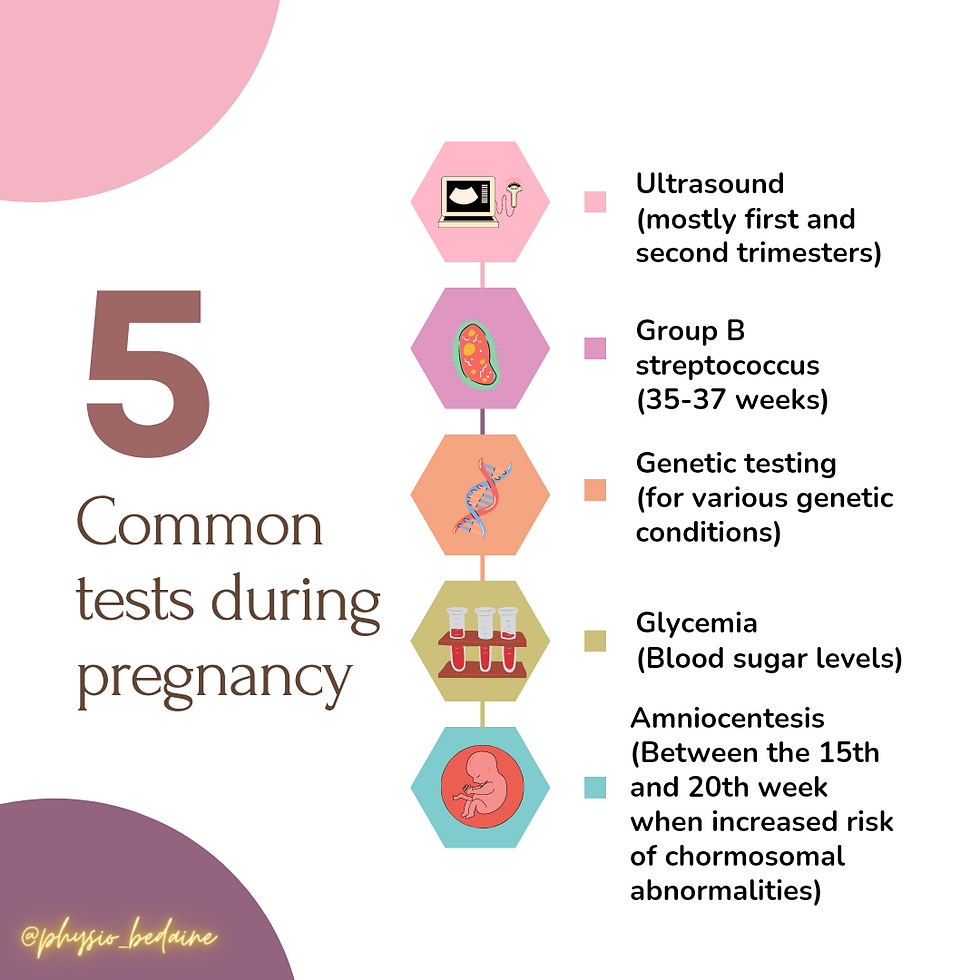What is it for?
- Andrée-Anne Lorrain
- Sep 16, 2022
- 2 min read
There are many tests to do during pregnancy. But... why?
Little guide to know what's what!

Sometimes when you're pregnant, you feel like you have a serious medical condition and need to go through endless tests. Indeed, with the advancement of medicine, we have at our disposal several diagnostic and routine tests to ensure that the pregnancy goes smoothly and that mom & baby arrive in full health at the end.
However, it is certain that all these tests can sometimes become anxiety-provoking, especially if we are not sure why we need them.
Ultrasounds
A classic! We think of pregnancy and immediately we think of ultrasound. It's the most seen test in movies and sometimes we can even think that once we get pregnant, we take this test dozens of times... and yet!
The ultrasound of the first trimester allows us to evaluate the presence, size and location of the pregnancy, to determine the number of fetuses and to estimate how long you have been pregnant (gestational age).
In the second or third trimester, a standard ultrasound is performed to assess several features of the pregnancy, including the anatomy of the fetus.
In the second and third trimesters, a limited ultrasound evaluation may be necessary when a specific issue requires investigation.
How do you prepare? Depending on the type of ultrasound, you may be asked to drink a certain amount of fluid or avoid urinating before a fetal ultrasound. When you make your ultrasound appointment, ask your health care provider for instructions.
Amniocentesis
An amniocentesis consists of taking a small sample of the amniotic fluid that surrounds the fetus. The sample is taken with a needle that is guided by ultrasound. If you have multiple pregnancies (twins), a sample from each amniotic sac will be required for fluid evaluation. This test is used to diagnose chromosomal disorders and open neural tube defects, such as spina bifida
Streptocoque du groupe B
Group B Streptococcus is part of the normal vaginal flora of the non-pregnant woman, so this bacteria usually goes untreated. However, its presence during pregnancy is of concern because of the increased risk of preterm delivery and transmission to the newborn.
For this reason, between the 35th and 37th week, a vaginal-anal swab is taken to detect the presence of the bacteria.
If the presence of the bacteria is detected during the analysis of the swab, antibiotics (often penicillin - unless allergic) are given intravenously to the mother when she goes into labor.
Blood Tests
Routine blood tests ordered at your first visit:
These tests require taking three or four vials of blood to test for the following:
Blood type, including your Rh factor: If you are Rh-negative and your baby is Rh-positive, your body can produce antibodies that destroy your baby's blood cells; this happens when your blood is mixed (which usually happens during delivery).
Rubella
Blood count (for anemia)
Hepatitis B
Blood disorders
HIV
Chlamydia and gonorrhea
etc.
Glycemia (blood glucose)
This test takes place between the 24th and 28th week (at the end of the 2nd trimester). It is done to see if you are at risk for "gestational diabetes", also called "pregnancy diabetes".
You will be asked to drink an orange-sweetened drink and then, one hour later, your blood sugar will be checked by a simple blood test. You should not be fasting before this test.
Written by: Andrée-Anne Lorrain, M.Sc. pht, B.Sc. infirmière clinicienne




Comments